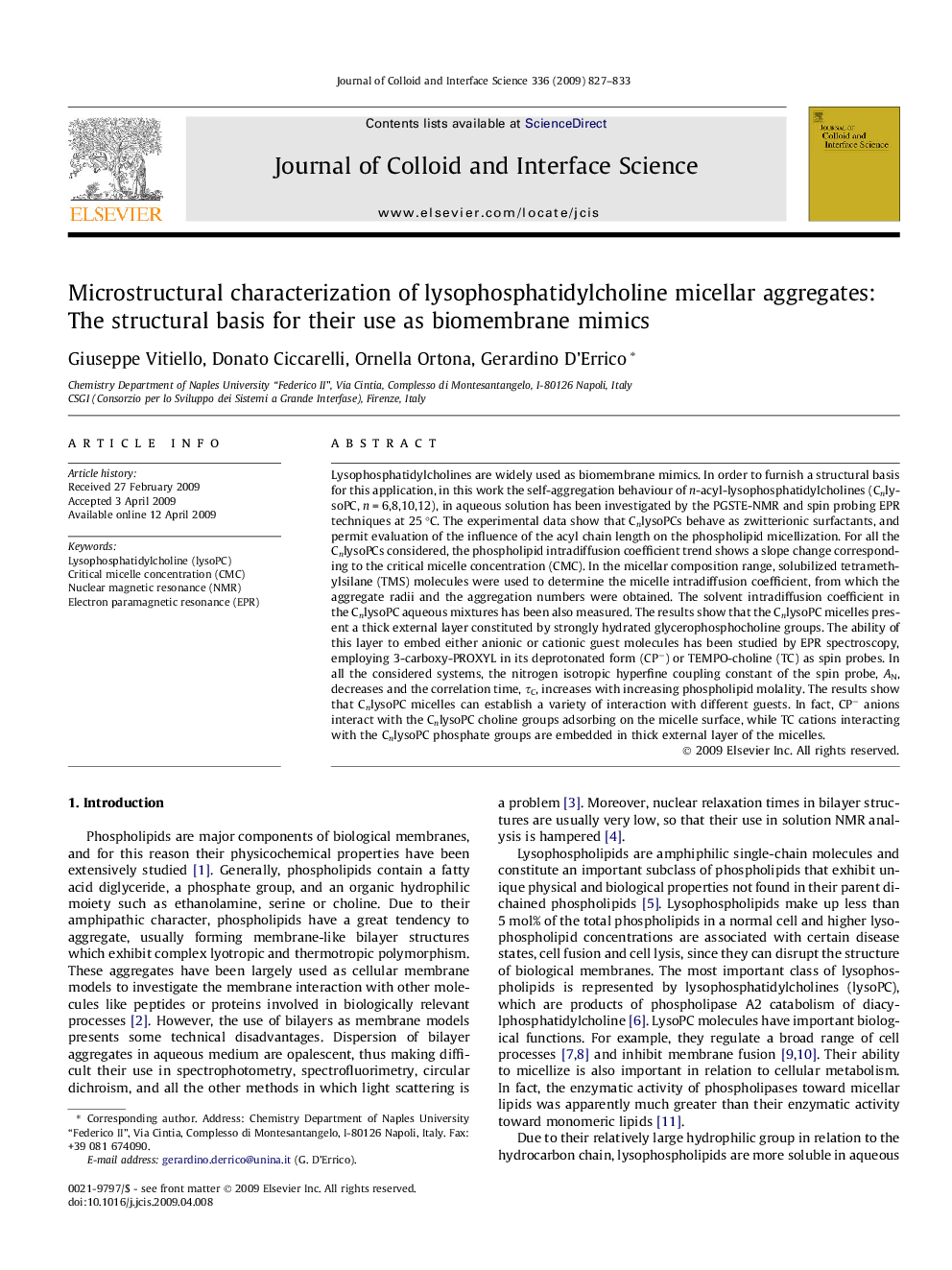| کد مقاله | کد نشریه | سال انتشار | مقاله انگلیسی | نسخه تمام متن |
|---|---|---|---|---|
| 610200 | 880642 | 2009 | 7 صفحه PDF | دانلود رایگان |

Lysophosphatidylcholines are widely used as biomembrane mimics. In order to furnish a structural basis for this application, in this work the self-aggregation behaviour of n-acyl-lysophosphatidylcholines (CnlysoPC, n = 6,8,10,12), in aqueous solution has been investigated by the PGSTE-NMR and spin probing EPR techniques at 25 °C. The experimental data show that CnlysoPCs behave as zwitterionic surfactants, and permit evaluation of the influence of the acyl chain length on the phospholipid micellization. For all the CnlysoPCs considered, the phospholipid intradiffusion coefficient trend shows a slope change corresponding to the critical micelle concentration (CMC). In the micellar composition range, solubilized tetramethylsilane (TMS) molecules were used to determine the micelle intradiffusion coefficient, from which the aggregate radii and the aggregation numbers were obtained. The solvent intradiffusion coefficient in the CnlysoPC aqueous mixtures has been also measured. The results show that the CnlysoPC micelles present a thick external layer constituted by strongly hydrated glycerophosphocholine groups. The ability of this layer to embed either anionic or cationic guest molecules has been studied by EPR spectroscopy, employing 3-carboxy-PROXYL in its deprotonated form (CP−) or TEMPO-choline (TC) as spin probes. In all the considered systems, the nitrogen isotropic hyperfine coupling constant of the spin probe, AN, decreases and the correlation time, τC, increases with increasing phospholipid molality. The results show that CnlysoPC micelles can establish a variety of interaction with different guests. In fact, CP− anions interact with the CnlysoPC choline groups adsorbing on the micelle surface, while TC cations interacting with the CnlysoPC phosphate groups are embedded in thick external layer of the micelles.
Lysophosphatidylcholine micelles present a thick hydrophilic outer layer constituted by highly hydrated glycerophosphocholine groups, in which suitable guest molecules can be embedded.Figure optionsDownload as PowerPoint slide
Journal: Journal of Colloid and Interface Science - Volume 336, Issue 2, 15 August 2009, Pages 827–833